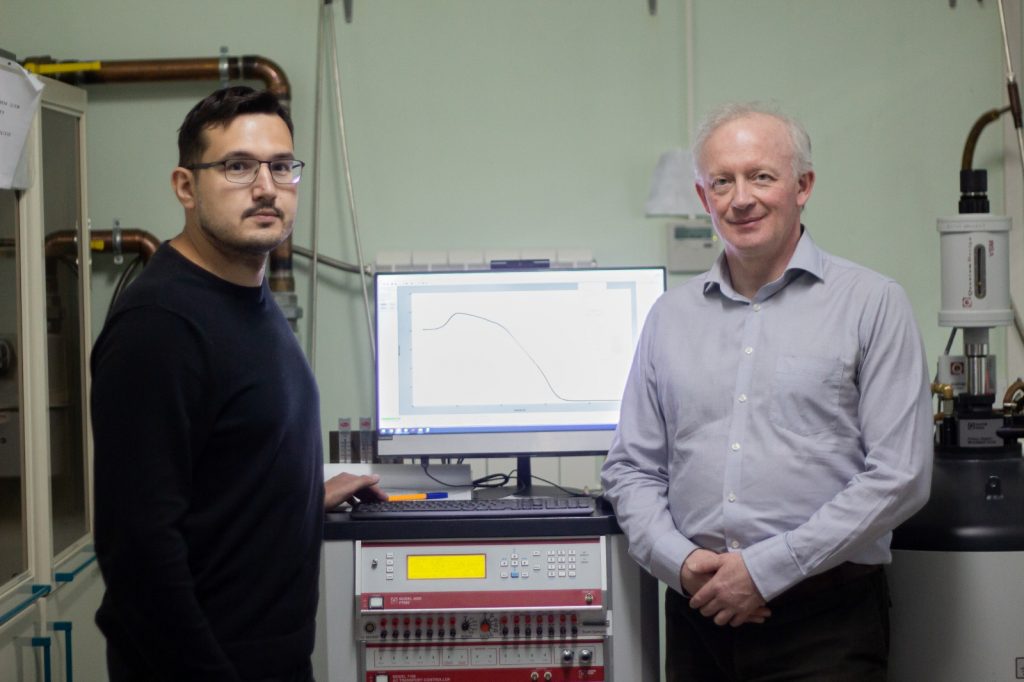Researchers synthesize multiferroics with optimal composition

Two articles have seen light in Magnetochemistry.
Scientists of the Institute of Physics of Kazan Federal University, utilizing their proposed new method of synthesis with the use of iron oxalate, obtained mono- and polycrystals of a family of magnetic spinels with a close to the ideal composition.
The work was carried out within the framework of the grant «Research of excitation spectra, orbital and spin structures in geometrically frustrated compounds of rare earth and transition metals» led by Professor Mikhail Eremin (Laboratory of Magnetic Radio Spectroscopy and Quantum Electronics).
“The spinel minerals we study – nickel chromite (NiCr2O4) and iron chromite (FeCr2O4) – are refractory, thermally stable, very solid minerals. For example, the spinel lining can withstand temperatures of about 2,000 degrees Celsius. Polycrystals are also used in the creation of heat-regulating coatings with high radiative capacity,” says Ruslan Batulin, Lead Research Associate of the Laboratory of Quantum Simulators.
In nature, minerals of chromite iron (chromite) and chromite nickel (nichromite), according to the scientist, are contained in magmatic rocks and are very rare. In addition, they have a lot of impurities that affect the properties of minerals. As for artificial mono- and polycrystals, their composition can be approximated to the ideal if particularly pure oxides are used for synthesis.
“The magnetic properties of these compounds, along with their multipurpose properties, are of particular interest, even though the multiferroicity of these compounds occurs only at low temperatures. Multiferroics are materials that exhibit at least two of the three properties of iron: ferromagnetism (the property of iron parts retaining magnetic properties for a certain time), ferroelectric (the appearance of spontaneous polarization), or ferro-elasticity (spontaneous deformation),” continues Batulin.
“Iron-chrome spinel synthesis (FeCr2O4) using iron oxalate ensures its single phase and close to the ideal composition. The advantage of this method (compared to the widely used method of synthesis using pure iron and chromium oxides) is the creation of a reduction atmosphere in the furnace necessary to maintain the oxidation state of Fe2+ by decomposing iron (II) oxalate FeC2O4, used as one of the source components,” explains Batulin.
According to Research Associate Almaz Zinnatullin, the presence of undesirable ions Fe3+ in the obtained polycrystalline samples and in grown monocrystals was carefully controlled by scientists with the use of Mössbauer spectroscopy.
“Since the nickel-chromium spinel cannot be studied by Mössbauer spectroscopy in conventional laboratories, we have decided to use magnetometry to express oxidation of nickel ions. We have been able to prove that magnetometry is one of the most accessible and simple methods that allow rapid quality assessment of synthesized chrome spindles,” adds Roman Yusupov, Lead Research Associate of the Laboratory of Heterostructures for Post-Silicon Electronics.

